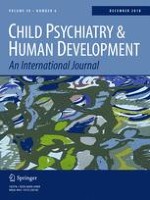05-06-2018 | Original Article
Effects of Acute Exercise on Resting EEG in Children with Attention-Deficit/Hyperactivity Disorder
Gepubliceerd in: Child Psychiatry & Human Development | Uitgave 6/2018
Log in om toegang te krijgenAbstract
This two stage study examined the effects of acute exercise on resting electroencephalographic (EEG) patterns of children with attention-deficit hyperactivity disorder (ADHD). The first stage compared the neural oscillatory patterns of children with and without ADHD. Resting EEGs were recorded under an open-eyes condition from 24 boys with ADHD and 28 matched controls. The second stage of the study employed a randomized cross-over trial design. The 24 boys with ADHD engaged in a 30-min intervention that consisted of either running on a treadmill or watching a video on alternative days, with resting EEGs recorded before and after treatment. The first stage found that children with ADHD exhibited significantly higher theta/beta ratios over the midline electrodes sites than controls. The second stage further indicated that children with ADHD displayed smaller theta/beta ratios following the exercise condition compared with the video-watching condition. This finding suggests that acute exercise normalizes arousal and alertness of children with ADHD, as reflected in resting EEG readings.
